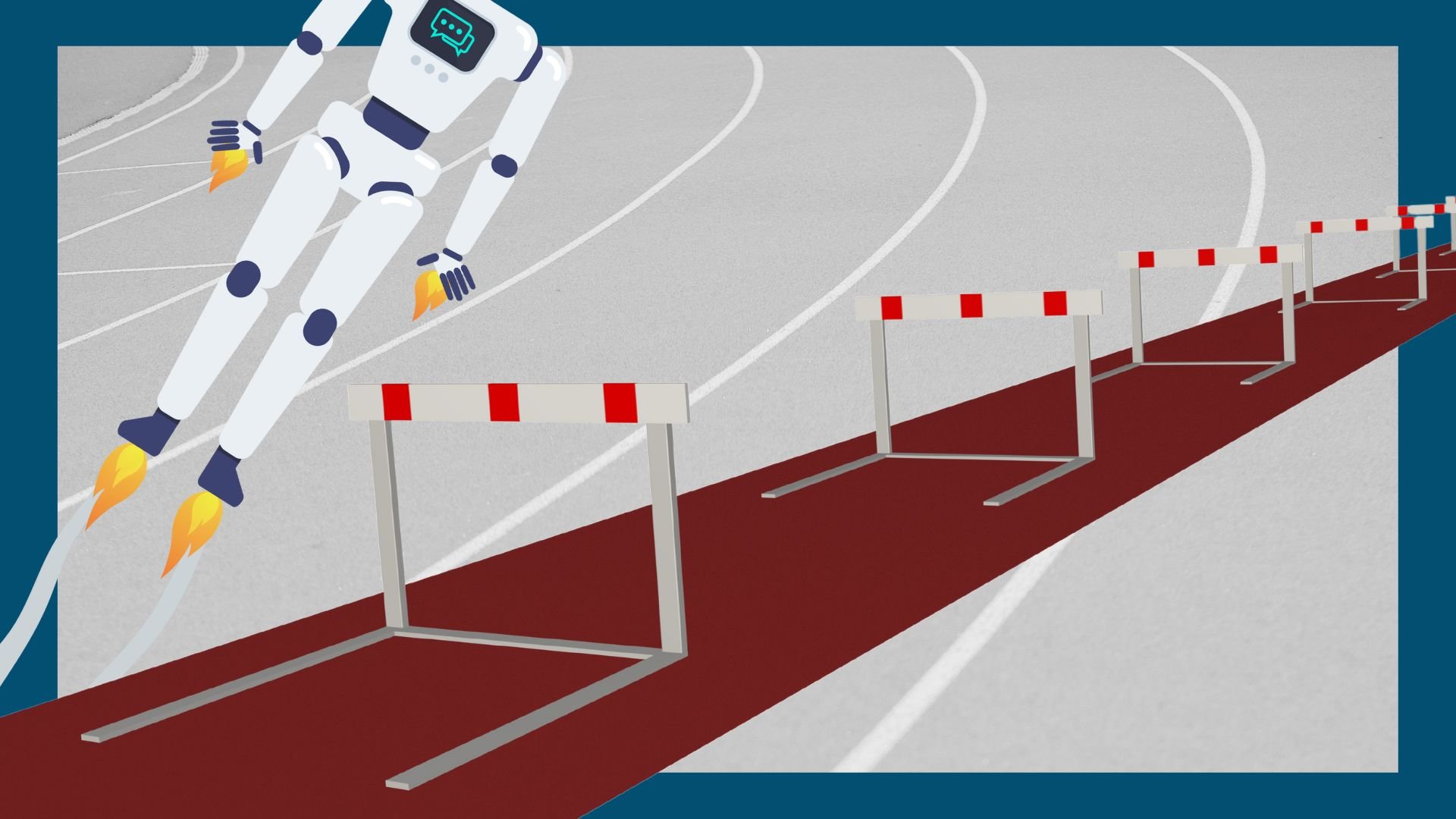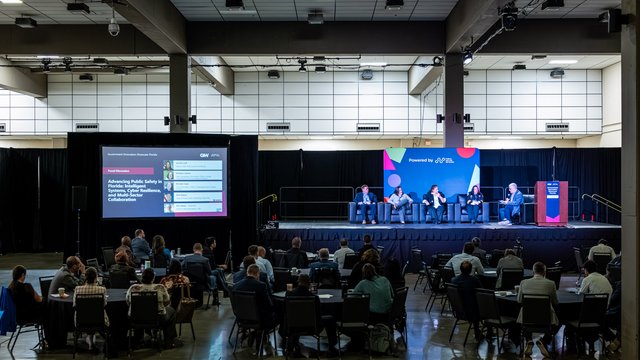


Public sector service delivery is facing a range of challenges that are only getting more complex over time. Governments are increasingly under pressure to deliver more services with fewer resources, all while trying to meet the rising expectations of the public. This widening gap between what citizens expect and what governments can deliver is becoming more pronounced. This is the unmet need that exists because the government’s current capabilities can’t keep up with what people want or need.
As if this wasn’t enough, governments are also contending with an aging population, climate change, and the global challenges that come with a growing domestic and global population. These problems are multifaceted, complex and deeply interconnected, yet governments are often trying to address them with tools and tactics that are altogether too simplistic, and with a public sector workforce that largely lacks the specialized skills needed to tackle these issues effectively.
However, there is a ray of hope: Artificial Intelligence (AI) and digital automation offer promising new approaches, especially suited to dealing with complexity. If used strategically, AI can help governments not only meet the demands placed on them but also do so in a way that is efficient, responsive, and sustainable. Below, we'll explore how AI can address the biggest challenges facing the public sector, focusing on the latent demand gap, the need to do more with less, and the importance of equipping the workforce with the right skills.
Challenge 1: Latent Demand is Awakening
One of the most significant challenges facing governments today is the widening gap between what citizens expect and what the government can deliver— addressing latent demand. This issue is particularly evident in areas like human services, where the need is high, but the capacity to meet that need is always limited.
Health services provide a stark example. The total demand for health services is essentially infinite. As our population grows and ages, and as people live longer with chronic diseases, the strain on healthcare systems will only intensify. Similar scenarios play out in other areas like justice and education, where the gap between what people need and what the system can provide continues to widen. Health, however, is the big one.
Way back in 2010, the Commonwealth Treasury predicted that if left unchecked, health and hospital spending would consume all tax revenues collected directly by state governments by 2045.
While much has been done to address this doomsday scenario, health continues to take up a larger proportion of state budgets each year. In the last NSW budget, Health spending was easily the largest sector with just over $31bn or 25% of the total. Education came in second at just under $24bn.
How can automation and AI help?
Automation and AI can play a crucial role in addressing this latent demand. By speeding up and joining together process stages, and then making them more efficient, AI can help governments respond more quickly and effectively to the needs of their citizens. For example, AI-powered tools can analyze vast amounts of data to predict where demand will be highest, allowing governments to allocate resources more efficiently. Automation can also handle routine tasks, freeing up human workers to focus on more complex and value-added activities. This not only helps to bridge the gap between demand and supply but also improves the overall quality of service delivery.
Challenge 2: Doing More than Ever with Less than the Year Before
Governments are increasingly being asked to do more with less—more services that are more personalised and more responsive —all while operating with tighter resource constraints. This is a tough ask, and it’s one that many governments are struggling to address. Budget cuts, staffing reductions, and increasing demand for services are putting immense pressure on public sector organizations.
For instance, in New South Wales, we’ve seen a series of cuts to jobs and government services, including Service NSW, which is supposed to be the front door of government services for the public. These cuts are a direct result of the pressure to reduce costs, but no one wants the service levels to decrease.
Very often we hear the mantra of “doing more with less”, but the reality is that you can’t expect that by doing the same things the same way, that you get better results. Something has to give.
How can automation and AI help?
This is where digital automation comes into play. By automating repetitive and time-consuming tasks, governments can free up resources and focus on the areas that truly need human intervention in the form of consideration of complex factors or judgement of a result. Digital automation can streamline processes, reducing the time it takes to deliver services and improving the overall efficiency of government operations.
For example, automated systems can handle routine tasks like pre-processing applications, managing and cleaning data, and even interacting with citizens through chatbots and other digital interfaces. This not only speeds up service delivery but also reduces the workload on human staff, allowing them to focus on more complex issues that require critical thinking and problem-solving.
Moreover, digital automation can help governments become more agile and responsive. By leveraging AI and data analytics, governments can quickly adapt to changing circumstances and respond to emerging needs. This is particularly important in today’s fast-paced world, where the ability to act quickly can make a significant difference in outcomes.
Case in Point: Social Housing
Social housing provides a compelling case study that illustrates both the challenges of latent demand and the pressures of doing more with less. When I was in government, there were about 110,000 social housing properties or a portfolio of properties valued at around $50bn, which sounds like a lot. However, the demand has always far outstripped the supply, with waiting lists stubbornly more than 55,000 families long implying years in the queue. It has been estimated that even if the number of social housing properties were doubled, the demand wouldn’t be fully met. In fact, it’s likely that even more people would seek social housing if it were more readily available. There is a national housing shortage and a social housing shortage.
The current system, while functional, is far from optimal. It’s a C+ grade—it works, but it could be a lot better. To truly address the housing crisis, governments need to find ways to help get more houses through the planning system and on to the market, and that means improving the efficiency and effectiveness of the processes involved. AI can help here.
To help with the queues for social housing , governments need to make the application and allocation process more efficient and, more controversially, find better ways of identifying when people in social housing no longer need it.
This last point is a difficult one. After finally gaining access to social housing, there is an understandable reluctance to give it up. However if the circumstances for a family improve, then multiple options exist for those families to pay commercial rates of rent or to release the property. You just need to know if circumstances have improved. It is surprising how many successful companies offer social housing properties as their registered address. Access to social housing can be a way to limit intergenerational disadvantage and be part of the pathway to success. Social housing properties are however relatively scarce and should be managed as if they were.
How can automation and AI help?
By automating the administrative tasks involved in managing social housing, such as processing applications, tracking property maintenance, and managing tenant communications, governments can speed up these processes and make the system more responsive. AI can also help in predicting where the demand for social housing will be highest, allowing for better planning and resource allocation.
Additionally, AI-powered tools can analyze data from various sources to identify trends and patterns that might not be immediately apparent. This can help governments make more informed decisions about where to invest resources and how to address the most pressing needs. In this way, AI can help to not only meet the current demand for social housing but also to anticipate and plan for future needs.
Challenge 3: Complex Problems are Rarely Solved with Simple Solutions or Generalists
As governments grapple with increasingly complex problems, there’s a tendency to try and solve them with overly simplistic tools, tactics, and a generalist workforce. This approach might have worked in the past, but it’s becoming increasingly clear that it’s not enough to tackle the challenges of the modern world.
Take, for example, the way governments are managing large-scale projects like infrastructure development, the transition to Net-zero, aged care or climate change initiatives. These are all incredibly complex undertakings that require a deep understanding of the technical, economic, and social factors at play. Yet, all too often, these projects are managed by generalists — people who may be excellent at policy development but lack the specialized knowledge needed to handle the complexities involved.
Very often the tendency is to “keep it simple” rather than embracing the inherent complexity of the challenge simply because it crosses so many domains of responsibility and so many interconnected issues. When did you last hear a government colleague say “let’s deliberately recomplicate this problem”? My guess is not often.
To tackle a persistent of “wicked” challenge requires recomplicating the problem enough to ensure you are addressing the most important set of connected issues within a manageable scope of complexity. Not easy, but essential if we really want to make changes in the real world.
How can automation and AI help?
AI offers a different approach to addressing this complexity however it’s not good enough to have a general understanding of AI concepts. Governments need people who can dive deep into the technology, understand how it works, and apply it in ways that are both innovative and effective. This means investing in a workforce with specialized skills in data science, machine learning, and digital automation. That is counter to the long term trend in many jurisdictions with an increasing tendency away from engaging technical specialists in favour of those with general policy skills. There are relatively few STEM grads or AI specialists in governments across Australia.
Moreover, as the world becomes more complex, so too do the challenges facing governments. By 2030, we’re expected to see significant changes in everything from population dynamics to global economics, and governments will need to navigate these changes with a level of expertise that goes beyond what a generalist workforce can provide.
But this isn’t just about hiring more specialists; it’s about creating an environment where complexity is embraced, not avoided.
Governments need to move away from the seductive but inherently debilitating “keep it simple” mentality and start recognizing that many of the problems we truly care about are inherently complex and require equally complex solutions. This means being willing to invest in the right tools, frameworks, and people to manage these challenges effectively.
Moving Forward
The future of public sector service delivery lies in the strategic use of data, AI and digital services. By addressing latent demand, meeting the management expectation “to do more with less”, and equipping the workforce with specialized skills, governments can rise to the challenges they face and deliver services that meet the needs of their citizens. But to do this, they must be willing to embrace complexity, invest in the right tools and people, and recognize that the old ways of doing things simply aren’t enough anymore.
In part 3, Ian will be looking at how AI expertise can be embedded into public sector servicing, by utilising existing standards and foundational literacy skillsets. To learn more about Ian, you can read his recent Groundbreakers interview. Or, if you missed part 1 you can find his vision for AI in 2030 below...































